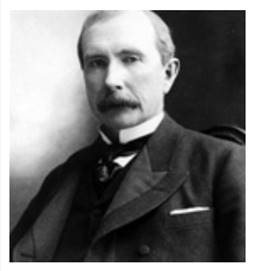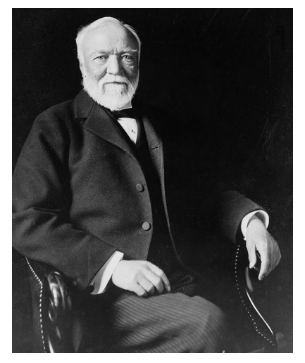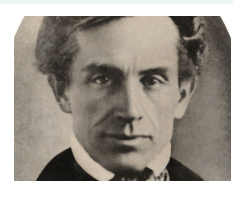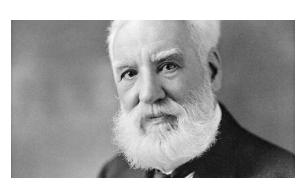Industrialization and Progressivism (1877-1920)
Agriculture to Industrial Society
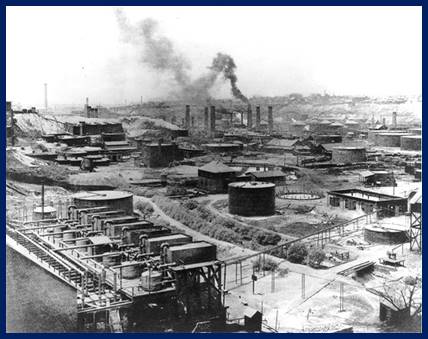
Click here to watch an overview video on
American Industrial Age.
|
Content Statement #8 |
|
The rise of corporations, heavy
industry, mechanized farming and technological innovations transformed the
American economy from an agrarian to an increasingly urban industrial society. |
|
Content
Elaboration |
|
Industrialization in the United States in the late 19th and early 20th centuries were
characterized by the rise of corporations and heavy industry, which transformed the American economy.
Consequences of this transformation included: ·
a shift from a
predominance of agricultural workers to a predominance of factory
workers; ·
a shift from rural
living to urban living, with more people living in crowded and
unsanitary conditions; ·
new
technologies made production more efficient as machines replaced human
labor; ·
increased
agricultural production due to mechanized farming; and ·
the development
of the mechanized assembly line and mass production which led to the
transition from skilled to unskilled labor. Some of the technological innovations
that transformed the American economy in the late 19th and early 20th
centuries included the telephone, phonograph, incandescent light bulb,
washing machine, skyscraper, automobile, and airplane. |
Figure
1 Inside an Industrial Factory
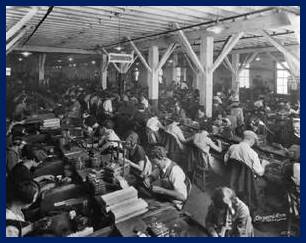
|
Section A Agricultural Economy to Industrial Economy Countryside to the City |
|
During the Gilded Age (1870’s - 1900), the
American Economy shifted its focus from an agricultural based
economy to one that was steeped in industrialization. |
|
As a result of the boom of the American
economy, a newly created middle class enjoyed wealth and
prosperity. |
|
Beyond their reach was an elite group of wealthy
businessmen that controlled much of the economic interests of the
United States. |
|
John D Rockefeller and Andrew Carnegie would not only be defined by their wealth,
but would forever be known as “captains of industry” and “robber barons” in
studies of American history. |
|
American inventors and innovators, such as Samuel
Morse, Alexander Graham Bell, Thomas Edison, Nicholas Tesla and Henry
Ford, created products that would change American life society. |
|
Electricity and Oil became more usable and reliable for factories. |
|
Steel
increased with the mass production of the automobile. |
|
Assembly Line decreased specialization in the workforce. |
|
Communication, Telephone, and Radio was widespread for the
middle class and wealthy. |
Figure
2 How did the United States grow and change
between 1860 and 1910?
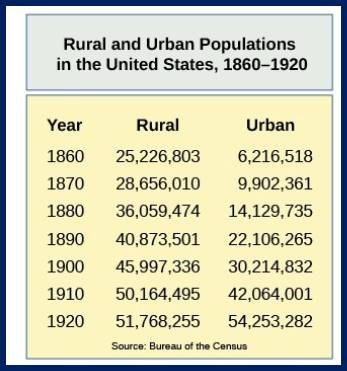

Click here to complete an online
game on the Agrarian to Industry.
|
Two
individuals best exemplify the boom of 19th century
industrialization: John D.
Rockefeller and Andrew Carnegie. |
|
|
John D. Rockefeller
Oil |
John
D. Rockefeller began as bookkeeper for a grain company in Cleveland, Ohio. His
frugal lifestyle led him to save money to invest in the up and coming market
of oil refining. By
creating or buying the means of production for oil, Rockefeller utilized the
concept of vertical integration. Rockefeller
controlled the vast majority of oil refining in the United States. |
|
Andrew Carnegie
Steel and Railroad |
Andrew
Carnegie’s life is a “rags-to-riches” story that exemplifies the American
dream. An
immigrant to the United States from Scotland, Carnegie and his family settled
in Pennsylvania where they led a hard life. Carnegie
rose to the role of superintendent of the Pennsylvania Railroad through a
strong work ethic. Carnegie
used his accumulated wealth to invest in steel, eventually founding Carnegie
Steel. |
Figure
3 Railroad Track Mileage Growth by Decade in
number of miles (1860-1890)
Click here to watch an overview video on the
History of the Railroad.
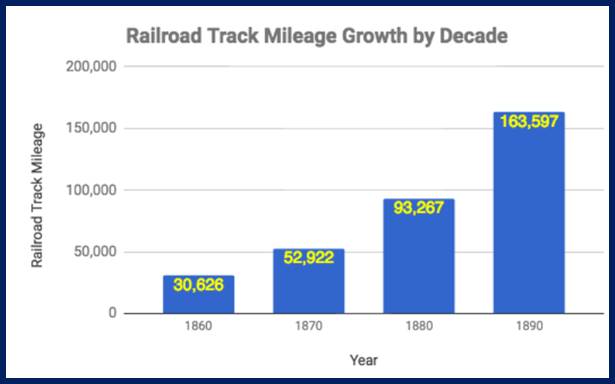
|
Section C Key Inventions |
|
|
America’s increasing power and
prestige stemmed from the growth of 19th century industry.
This growth was enhanced by new technologies. With the advent of the
telegraph, telephone and light bulb, industries and workers became more
productive and efficient and spurred the growth of America in 19th century. |
|
|
Samuel Morse and the Telegraph
|
Samuel Morse’s invention, Morse Code, drastically changed communication. All regions of the United States were
connected and information could be transmitted almost immediately nationwide. The telegraph rapidly increased the
dispersal of information to businesses that used it for financial gain. |
|
Alexander Graham Bell and the
Telephone
|
The telephone eliminated the need for
trained operators of Morse Code. The telephone became more widely used
in homes throughout the country. The telephone brought communication
efficiency to business and government entities and also to average Americans. |
|
Thomas Edison and the Light Bulb Thomas Edison at his research laboratory in Menlo Park, New Jersey 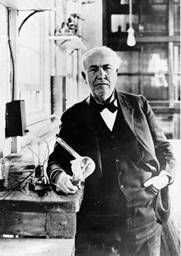 |
Edison established over a thousand
patents in his research laboratory in Menlo Park, New Jersey. His most notable invention was the
incandescent light bulb which revolutionized the way we live and work. Factories could operate twenty-four
hours a day since daylight was no longer required. Workers and their families utilized
night time for activities and entertainment. |
Figure
4 American Inventions
|
Inventor |
Invention |
Year |
|
James Watt |
Steam Engine |
1769 |
|
Eli Whitney |
Cotton Gin |
1793 |
|
Samuel Slater |
Cotton Spinning Mill |
1793 |
|
Robert Fulton |
Steamboat |
1807 |
|
Samuel Morse |
Telegraph |
1836 |
|
Charles Goodyear |
Vulcanized Rubber |
1839 |
|
Elisha Otis |
Elevator |
1861 |
|
Alfred Nobel |
Dynamite |
1861 |
|
Christopher
Sholes |
Typewriter |
1868 |
|
Alexander Graham
Bell |
Telephone |
1876 |
|
Thomas Edison |
Incandescent Light
Bulb |
1879 |
|
Nicholas Tesla |
Induction Motor |
1888 |
|
Wright Brothers |
Airplane |
1903 |
|
Henry Ford |
Model T
Automobile |
1908 |
Figure
5 Data from the United States Patent Office
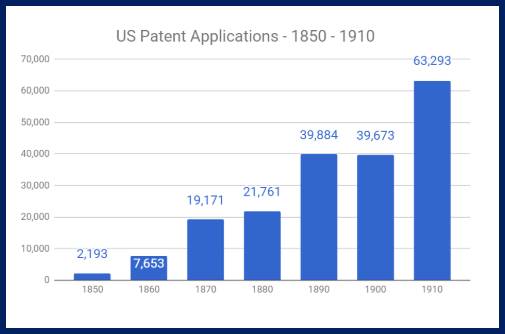
Figure
6 Ford Model T Assembly Line (1910)
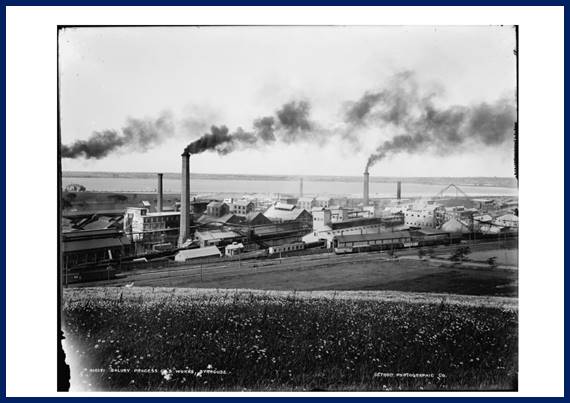
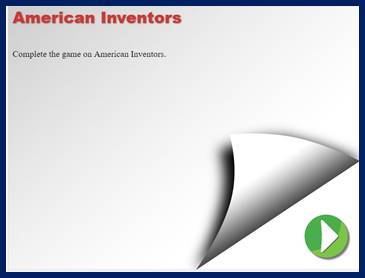
Click here to complete an online
game on the American Inventors.
|
Section D Impact on Industrial America |
|||
|
Industrialization |
Description
of Resource |
Impact on
Industrial America |
|
|
Natural Resource |
Oil |
With the discovery of a large oil
well in Western Pennsylvania in the late 1850’s, an industry was born
in the US. Drilling for oil also led to the petroleum refining industry. |
Oil could be transformed into kerosene, which could
be used for lighting lamps and later as gasoline for automobiles.
Kerosene was the major source of lighting for most American homes until
1930. Additionally, as the use of the automobile
grew in the early 1900’s, oil was a needed commodity. |
|
Transportation |
Railroad |
The transcontinental railroad
was a series of railroad tracks. The tracks allowed California, Texas, and
Washington state to be connected with the factories and large cities on the east
coast. As the US grew in size and population, the
Transcontinental Railroad provided quick transportation from the east to the west coast, a journey
that used to take many months now took one week. |
This allowed for expansion of farmland
available due to the railroad being able to get goods to market in a reasonable time. It also led to
the creation of time zones so travel time would be uniform (adopted by Congress in 1918). It influenced
business and industry because of the need for natural resources including
iron, coal, steel, lumber, and glass. |
|
Technology |
Light Bulb |
The light bulb was
perfected by Thomas Edison in 1878. The incandescent light bulb is an
electric light with a wire filament heated to a temperature that causes it to
glow with a visible light. |
This meant that homes and businesses
could have better lighting, and lighting that would last later into the
evening. This eventually led to longer work hours and night
shifts in factories where manufactured goods could be
produced in large quantities. |

Click here to explore historical timeline of
the Industrial Era in America.
